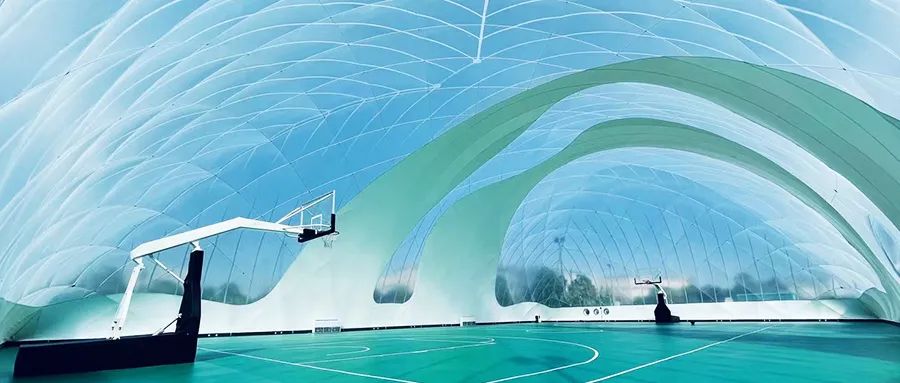News
Site Editor
 Site
/uploads/image/677267645dfcf.png
Site
/uploads/image/677267645dfcf.png
Air Domes: The Future of Architectural Innovation
Views: 1245
Author: Site Editor
Publish Time: 2023-10-21
Origin: Site
Introduction
In the realm of modern architecture, air domes have emerged as a fascinating and innovative structural solution. Known for their aesthetic appeal and remarkable energy efficiency, air domes are gaining traction in various sectors. This article will delve into the concept of air domes, their applications, advantages, challenges, and potential future developments.
What is an Air Dome?
An air dome is a building structure that relies on air pressure for support. Typically constructed from lightweight materials, air is pumped into the dome, creating a stable and resilient form. These structures can serve both temporary and permanent purposes, including sports facilities, exhibition centers, and residential spaces. The versatility and unique design of air domes make them a compelling choice for architects and builders alike.
Applications of Air Domes
-
Sports Facilities
Air domes are increasingly used in sports arenas and stadiums due to their adaptability. Many sports venues benefit from the quick assembly and disassembly capabilities of air domes, allowing for the hosting of large-scale events and competitions with ease.
-
Exhibition and Event Spaces
Temporary exhibitions and festivals often utilize air domes as flexible exhibition spaces. Their lightweight structure can be rapidly erected, accommodating various event sizes and requirements, thus enhancing the overall experience for organizers and attendees.
-
Residential and Commercial Buildings
Innovative architects are beginning to explore the use of air domes in residential and commercial buildings. This design offers not only aesthetic uniqueness but also effective natural light utilization, creating comfortable and inviting indoor environments.
-
Agricultural Uses
Air domes can also be employed in agricultural settings, such as greenhouses. The controlled environment they provide helps optimize plant growth, offering farmers a sustainable option for crop production.
Advantages of Air Domes
-
Energy Efficiency
One of the most significant benefits of air domes is their energy efficiency. By promoting natural ventilation and maximizing daylight, these structures can significantly reduce reliance on artificial heating, cooling, and lighting.
-
Rapid Construction
Thanks to their lightweight and modular nature, air domes can be constructed in a fraction of the time compared to traditional buildings. This is particularly advantageous for projects that require a swift response to changing needs.
-
Flexibility
Air domes are inherently flexible, allowing for adjustments and expansions as requirements evolve. This adaptability makes them suitable for various uses over time, accommodating shifts in community or organizational needs.
-
Aesthetic Appeal
With their sleek and modern design, air domes can become iconic landmarks within urban environments. Their unique shape and form are visually striking, contributing to a city’s architectural diversity.
Challenges of Air Domes
Despite their numerous advantages, air domes do face several challenges:
-
Climate Adaptability
In extreme weather conditions, air domes may require additional support and reinforcement to ensure stability and safety. Architects must consider local climate factors when designing these structures.
-
Material Selection
Choosing the right materials is critical for the performance and durability of air domes. Lightweight yet sturdy materials are essential to maintaining structural integrity while providing the necessary insulation.
-
Maintenance Issues
While generally low-maintenance, air domes still require regular inspections and upkeep over time. Ensuring that the air pressure and structural components remain in optimal condition is crucial for safety and performance.
Future Development Trends
As building technologies continue to advance, the potential for air domes is significant. Here are some likely directions for future development:
-
Integration of Smart Technologies
Future air domes may incorporate smart technology for automated control. Sensors could monitor internal temperature and humidity, automatically adjusting air flow based on real-time conditions to enhance comfort and energy efficiency.
-
Sustainable Practices
With a growing emphasis on sustainability, air domes are expected to increasingly adopt renewable materials and adhere to green building standards, minimizing environmental impact and promoting eco-friendly practices.
-
Multi-functional Spaces
Air domes may evolve into multi-purpose spaces that cater to various types of activities simultaneously. For instance, a single air dome could host sports events, exhibitions, and commercial activities, maximizing its utility.
-
Integration with Nature
Future designs may focus on blending air domes with natural surroundings. Incorporating green roofs or walls can enhance insulation and biodiversity while creating an aesthetically pleasing environment.
Conclusion
Air domes represent a cutting-edge architectural solution that showcases the potential for innovative design in the future of building. Their energy efficiency, rapid construction capabilities, and unique aesthetic qualities make them attractive across various sectors. As technology advances and design philosophies evolve, air domes are poised to play a more significant role in shaping urban landscapes and fostering sustainable development. Whether in urban planning, environmental stewardship, or cultural events, air domes will continue to capture the imagination and drive architectural innovation forward.








